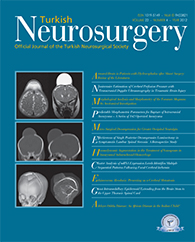2Janssen Research Foundation, Neuss, Germany DOI : 10.5137/1019-5149.JTN.5523-11.0 AIM: The purpose of this study is to detect gene expression patterns following focal cerebral ischemia.
MATERIAL and METHODS: 25 male Wistar rats were divided into control (n = 8) and ischemic (n = 17) groups. In the ischemic group, slowly progressing focal ischemia was simulated by two-vein occlusion with spreading depression (SD) a cortical microinjection of KCl induced. Ischemic tissue was removed at 2, 8, 24, or 72 h postischemia. Using semiquantitative reverse transcription polymerase chain reaction, we investigated mRNA expression levels of 13 representative genes related to cerebral ischemia. Cluster analysis of the gene expression levels was done.
RESULTS: In the ischemic group, the expression levels of c-fos, cyclin D1, and COX-2 were significantly higher at 2 h postischemia, and those of bcl-2, bcl-xL, and HO-1 at 72 h. Based on the cluster analysis, we statistically divided examined genes into three groups: group A, early expression (COX-2, c-fos, and bcl-2); group B, s expression (c-jun, SOD-1, bad, p53, SOD-2, bcl-xL, and bax); and group C, late expression (cyclin D1, c-myc, and HO-1).
CONCLUSION: We statistically classified the genes into three groups after focal ischemia. The genes of the early- and late-expression groups can be possible therapeutic targets for the treatment of cerebral ischemia.
Keywords : mRNA, Focal cerebral ischemia, Venous occlusion, Spreading depression, Cluster analysis




